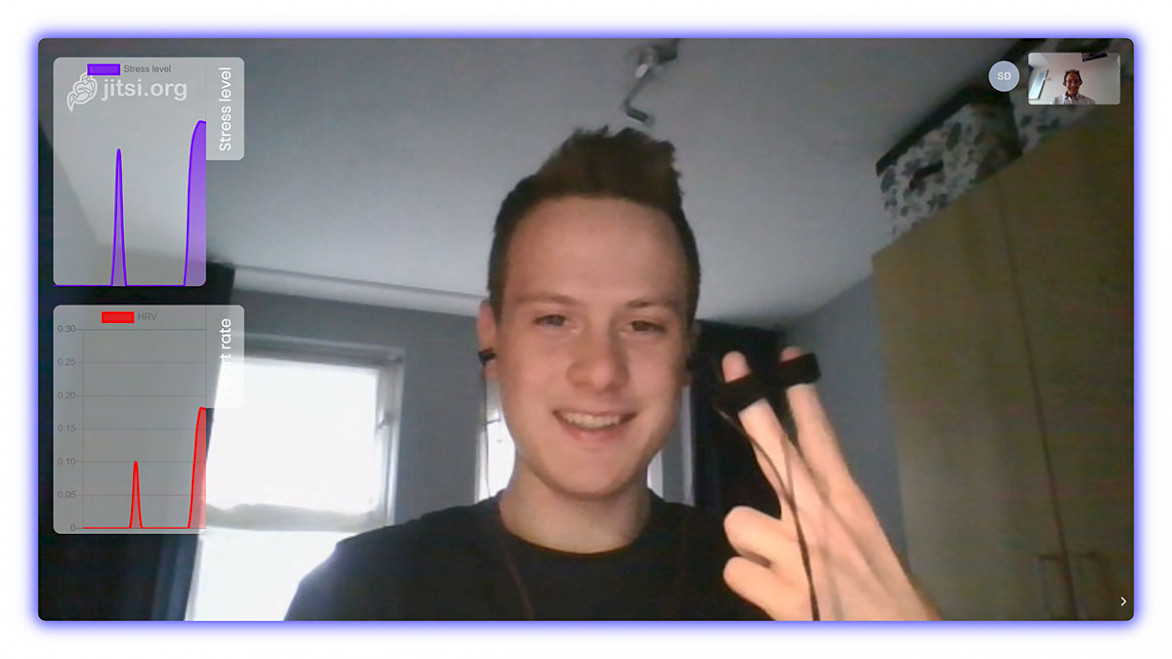Stressed or not during video calls?
Biofeedback is the name for presenting biological signals such as heartbeat, brain waves and skin conduction. It allows you to see physical reactions to what someone is experiencing or remembers. For example, when you talk about something that someone likes, you can see the heart rate go up. When you talk about something bad that person has experienced, you can see the skin conduction change.

Wouter Sluis-Thiescheffer, senior game researcher at the Interaction Design Lectorate at Fontys University of Applied Sciences ICT researches how biofeedback can be used in games. In this project for GGzE, he is collaborating with PhD student Milou Feijt at TU/e, who is investigating how technology can contribute to the quality of mental health care.
As part of this project, a prototype has now been developed that displays physiological signals during an image call. This app can be used in several ways. Wouter Sluis-Thiescheffer and Milou Feijt are currently researching the possible added value of the app during online psychological counselling. If a practitioner can reliably see whether a client is stressed, the practitioner may be able to work more effectively and fine-tune the treatment session to the client's stress level. The first results are promising, although more extensive research is needed for actual application in practice.
Dutch Technology Week
Another application we are investigating this week during the DTW: if two participants can see biofeedback from each other, they may feel more connected to each other. Initial exploratory studies at the TU/e indicate that exchanging an intimate signal such as your heartbeat -personal information that is not visible to other people in everyday life- can create a stronger sense of connection, similar to the connection you can feel with someone when you tell something personal about yourself. During Night of the Nerds we test the app with young people and interview them about what they think when their heartbeat is visible to their conversation partner.
In this video by Omroep Brabant, researcher Wouter Sluis-Thiescheffer and Arne Reijntjes, student ICT & Media Design, demonstrate how the app works.
For more information or a personal demonstration, please contact Wouter Sluis-Thiescheffer.: wouter.sluis@fontys.nl.
Also read the articles on this subject via Omroep Brabant and Bron.
Author: Marilyn Bailey